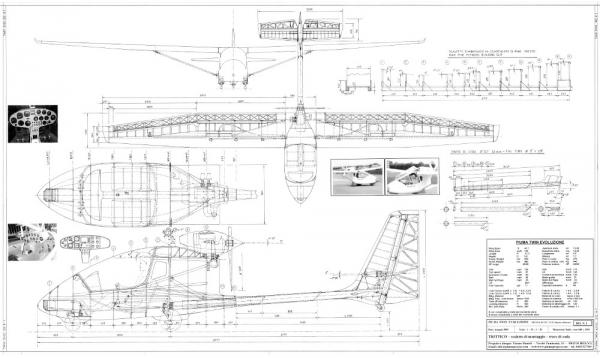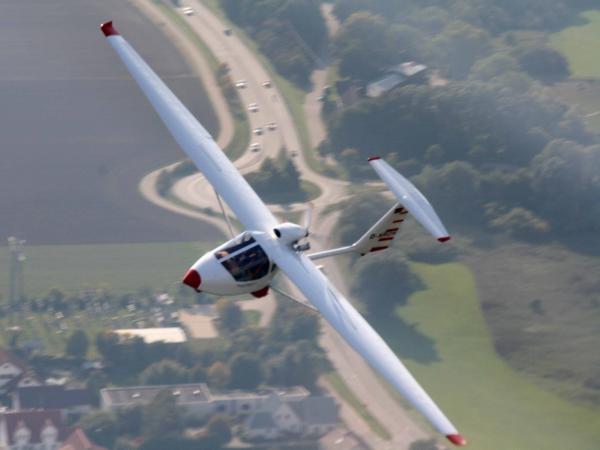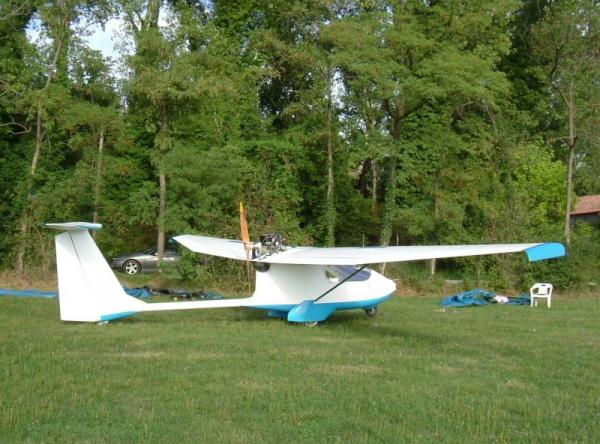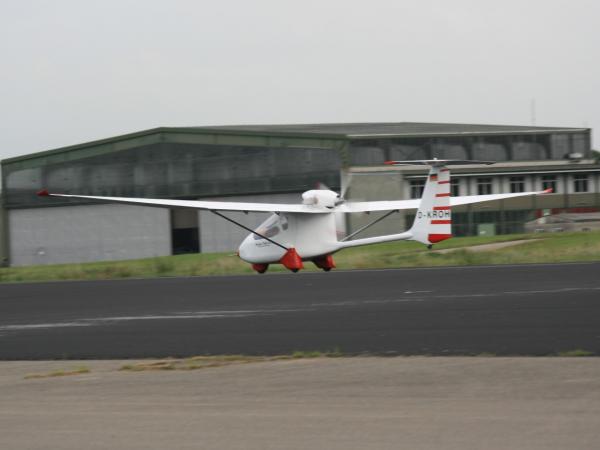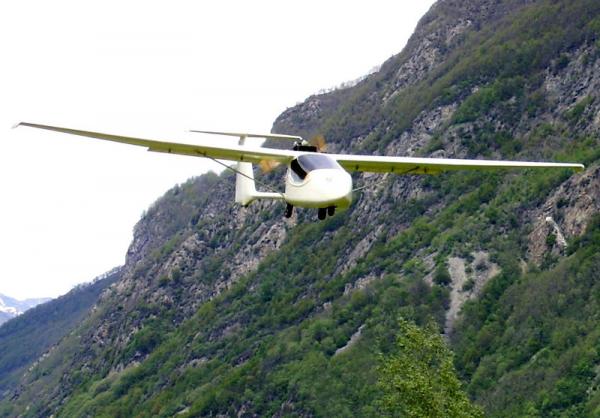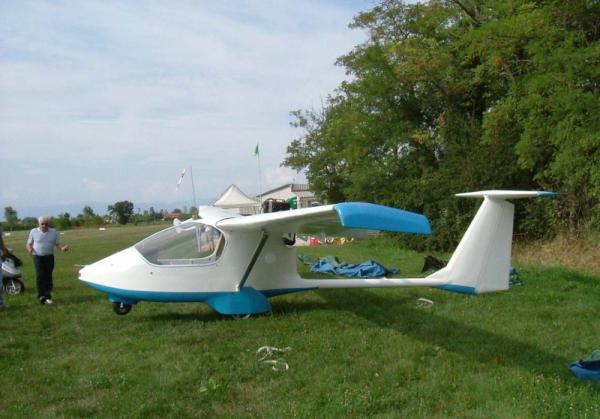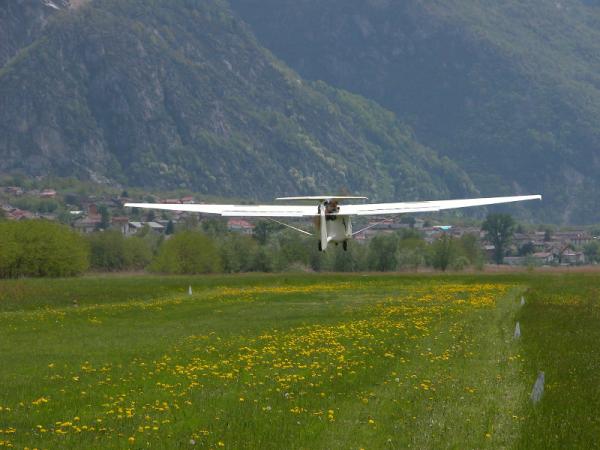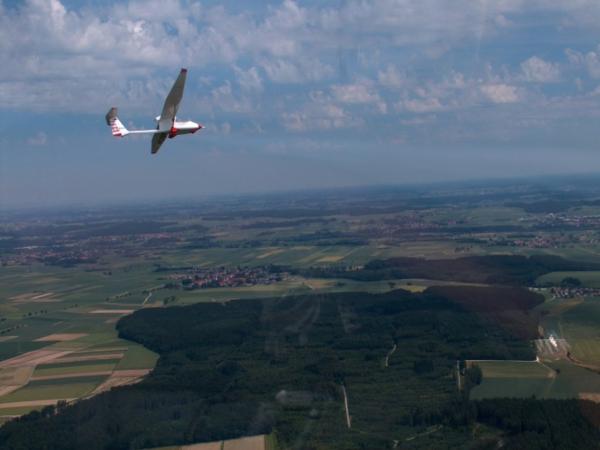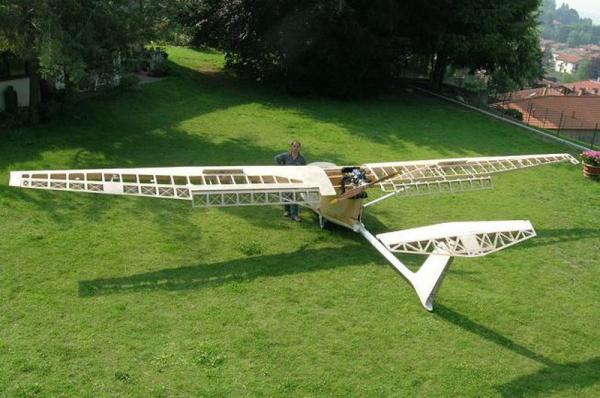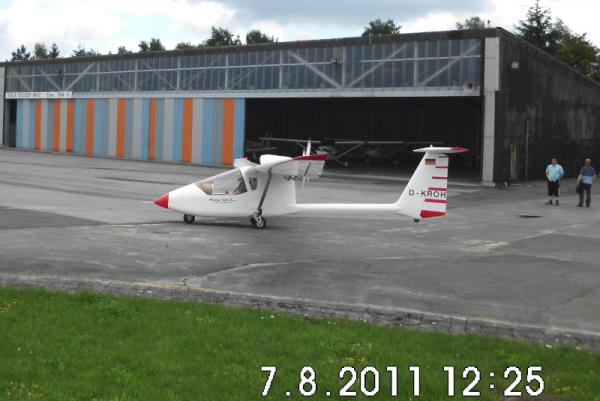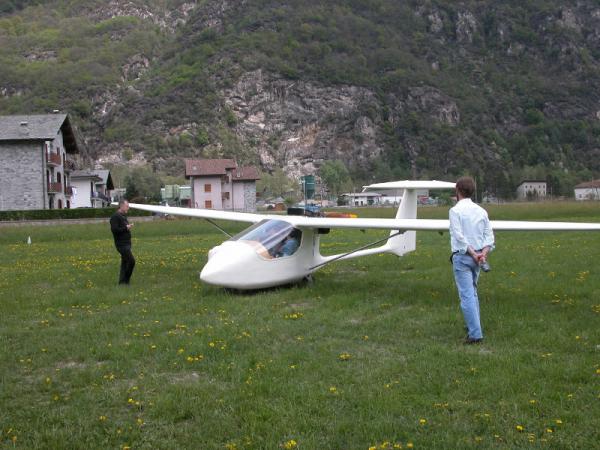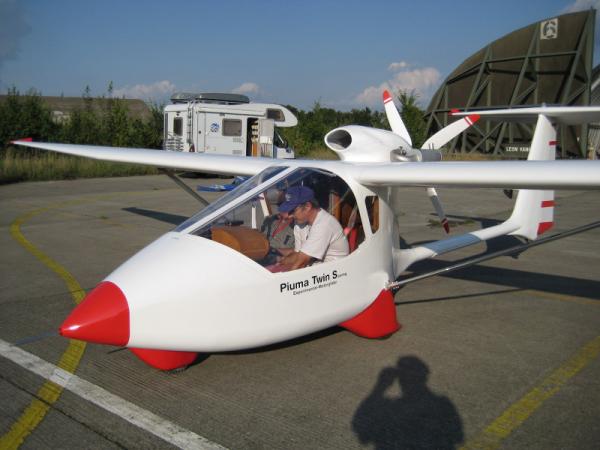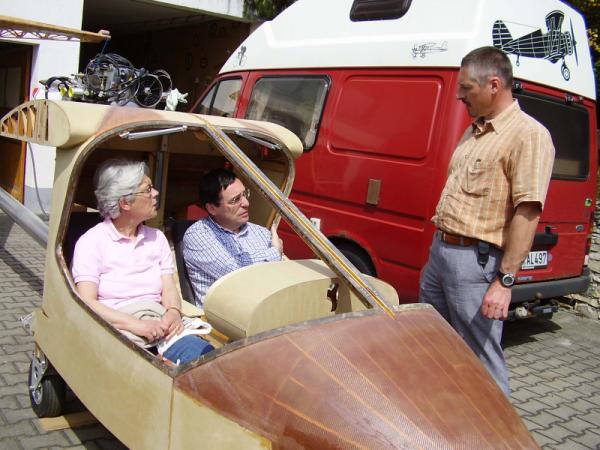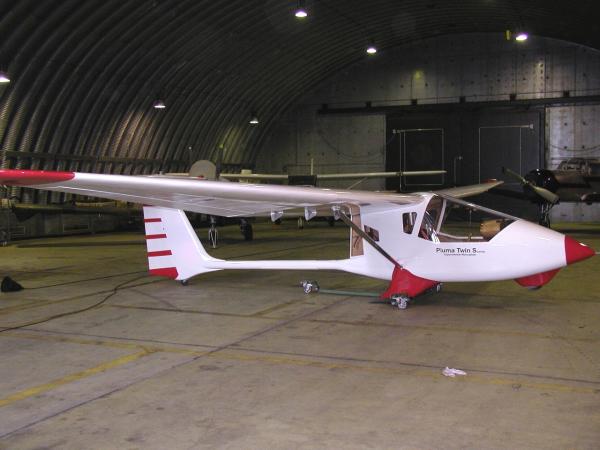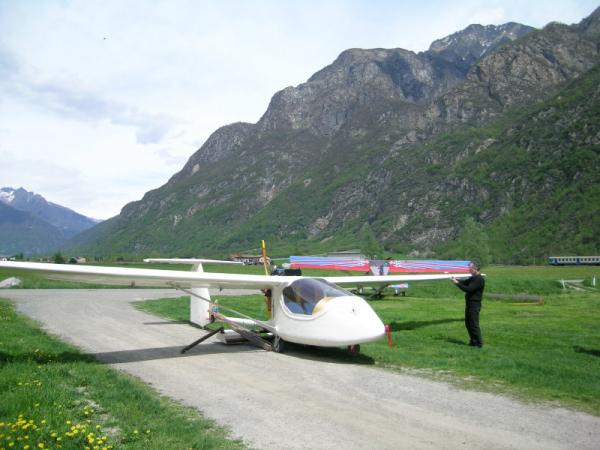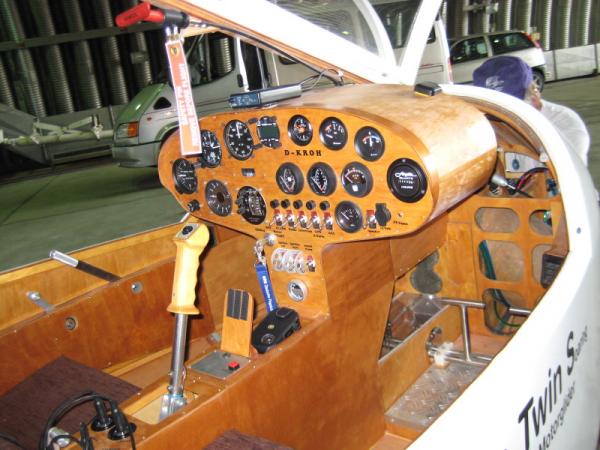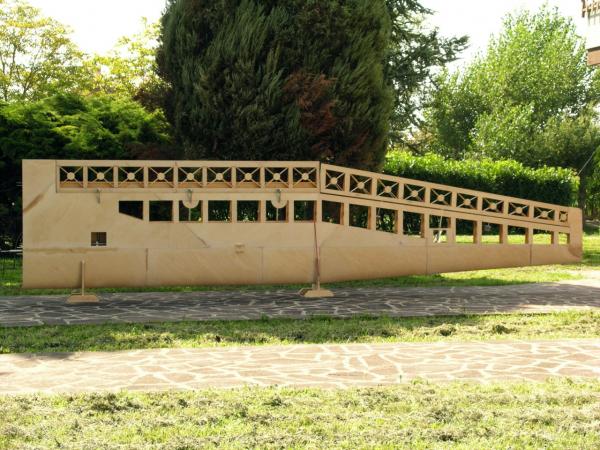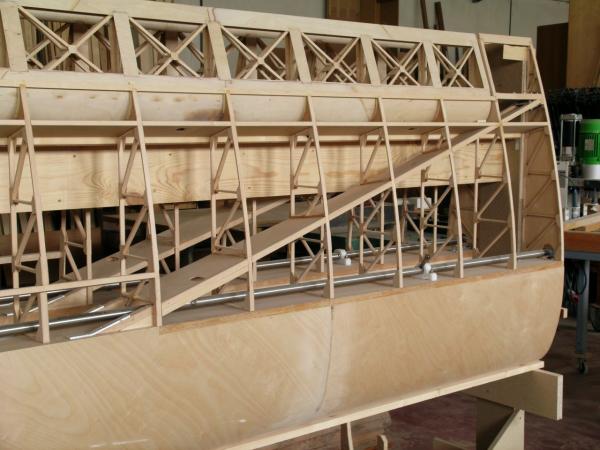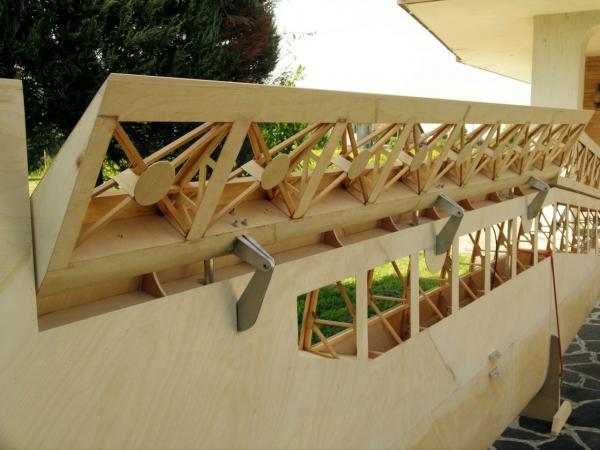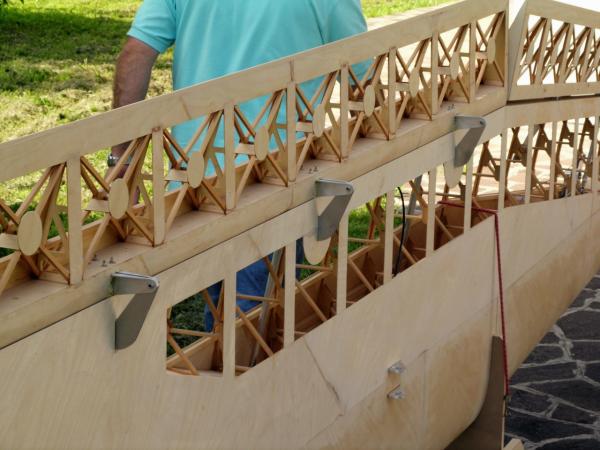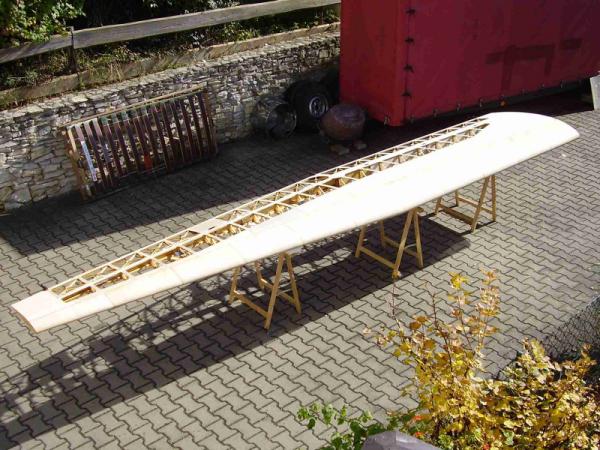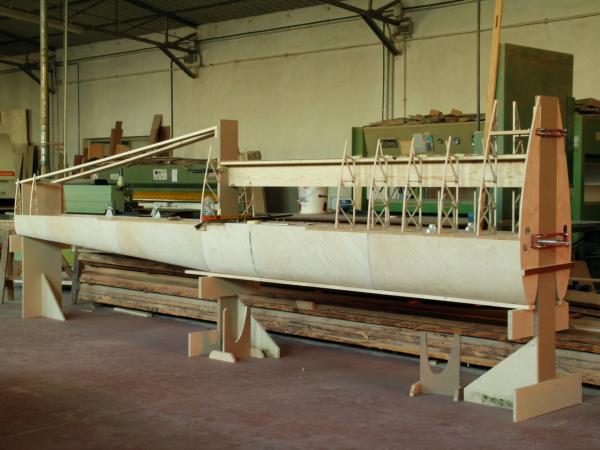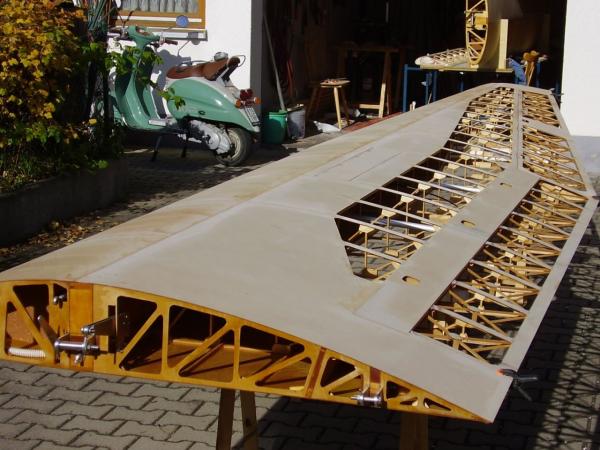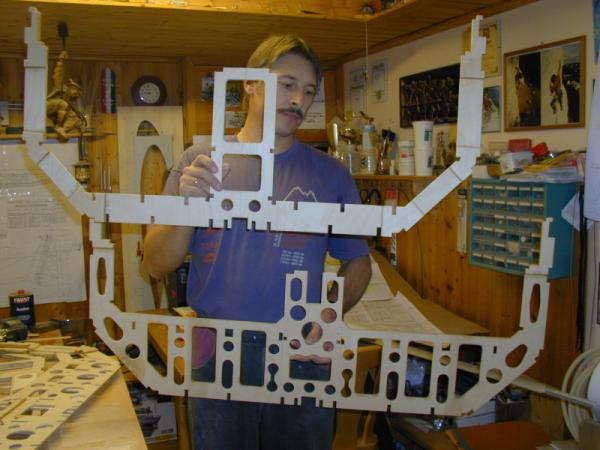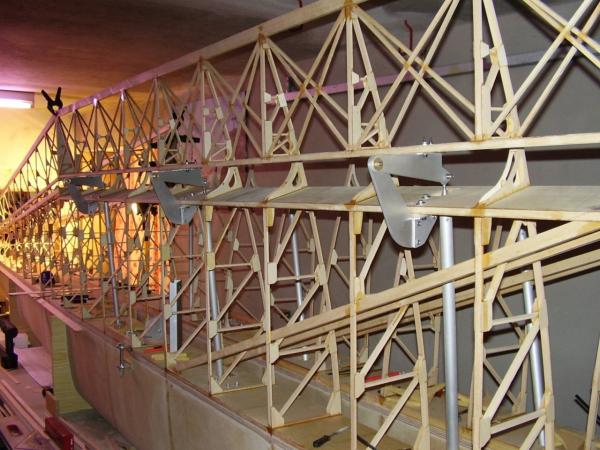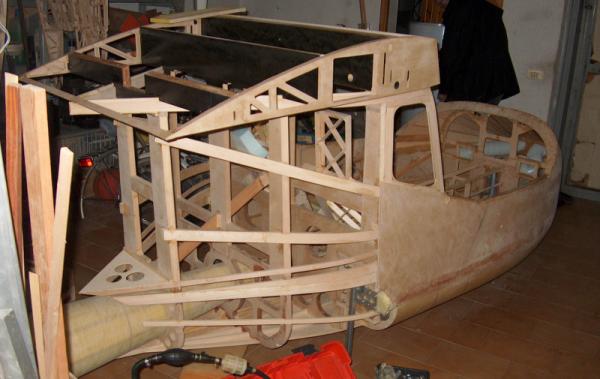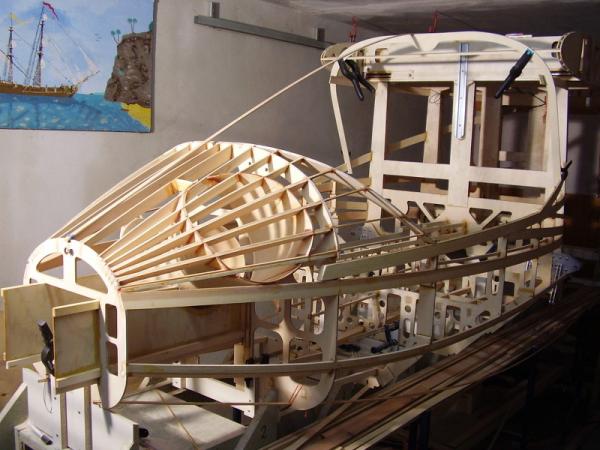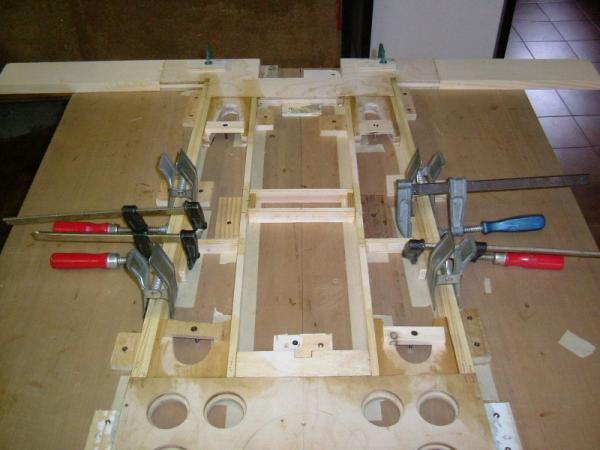Piuma Twin Evolution
The Piuma Twin project (no longer available) was completed in 1999 and the need for excessive ballast for single-pilot flight was verified in the various constructions together with the difficulty of building the tailplane with a limited weight;
the changes introduced to overcome these drawbacks prompted the redesign of almost all the designs which materialized in 2009 in a new project, the Piuma Twin Evolution.
The main changes were the front lengthening of the fuselage by 20 cm (8”) for better centering with little ballast for the pilot alone and a tail configuration similar to the single-seater Evolution, of which it follows the cross tail, solution that
allows to lighten the part relating to the rear planes compared to the previous T-shaped tail.
The engine mount was also designed in steel and aluminum alloy with double cushioning, to avoid improvised and unsafe assembly of the Rotax 503 by the builders, while some simplifications were introduced in the control levers and lightening in the wooden
part of the fuselage.
The good aerodynamics allow a fairly fast flight even with an engine of modest power, therefore economical in purchase and consumption; a 50-55 HP engine with a weight not exceeding 50 kg is indicated, such as the Rotax 503 or a Hirth 3202.
Good comfort has been sought through a 108 cm (42’) wide cockpit and ergonomic seats with a double pedal set and central cloche, while the trottle, brake and air brakes levers are positioned on the left side (that of the pilot).
Technical information
Wing Span
Wing Area
Length
Height
Empty Weight
Gross Weight
Fuel Capacity
HP/HP Range
V.N.E.
Top speed
V.A.
Stall clean
Stall full flaps
L/D
Min. Sink Rate
Load factors max.
Bldg Material
Bldg Time (man hours)
Take-off distance
Landing distance |
42.7 ft.
132 sq.ft.
21.3 ft.
5.6 ft.
600 lbs.
980 lbs.
11 Imp gal
45/60
106 mph.
103 mph.
92 mph.
44 mph.
35 mph.
20/1
220 ft/min.
+ 4.6 -2.3
WF
1.000
400 ft.
400 ft. |
Construction plans
The Construction Plans consist of 16 drawings in dimensions of 100 x 60 cm (40’ x 24’) or larger. All ribs are drawn on a 1 - 1 scale and many metal details (lever mechanisms, brackets, etc. are also on a 1 -1 scale.
The Construction and Use Manual, updated in 2020, is 50 pages with 70 photos, explanatory drawings and tables; the first 11 pages are dedicated to materials and equipment, over 30 pages to the various parts to be built and to the assembly.
Below is a detailed note of all the necessary materials, the calculation of the center of gravity and instructions for the first flights.
The Project Book (90 pages with 32 photos plus 80 graphs, drawings and tables) illustrates the sizing methods, the verification calculations of the resistant structures, as well as the flight characteristics based on Lift, Resistance
and Moment (from which VNE, VA, Vso, Efficiency, Vy, etc).
Also included is a DVD with 3800 photos of the construction phases of the various Piuma, many photos of the completed and flying Piuma and some in-flight videos, videos which are always visible on Youtube and Facebook (see the links at the bottom
of all pages of the website). In the DVD there are also the CAD drawings for laser or water cutting of all the flat metal parts to be made.
Other useful information for the builders also about the costs
Over the last 3-4 years, material costs have increased significantly, although the self- construction allows you to build an ultralight motor glider at a fraction of the cost of a similarly equipped industrial machine with the addition of priceless satisfaction
of knowing every detail of the motor glider you're flying.
The
cost of the materials themselves (wood, tubing, sheet metal, dacron, glues, etc.), excluding the engine, engine instruments, avionics and parachute, is still modest and can be estimated at around $ 12,000 at 2025 prices.
For the engine avionics and parachute much depends on whether you're purchasing a new or used 2 stroke engine.
The estimate here is really difficult, but if we really wanted to hazard a guess we could think of adding another $ 12,000 for the 2-stroke engine and used instruments, or another $ 19,000 for a new engine with engine instruments and traditional (non-digital)
complete avionics like those visible in the photos of the dashboards of the builder Achim Groh.
In summary, we will have a forecast of a total cost between $ 24,000 and $ 31,000 with non-digital avionics.
The construction time can be estimated at around 1200 hours, having the metal parts made in a workshop.
The tail boom is made of 6005-T16 aluminum alloy in the dimensions: diameter 127 mm (5”)- thickness 1.5 mm (1/16”) - requirement: length 5.2 m (205”) plus half tube (2.60 m)(102”); by adapting the fuselage fittings, it is also possible
to use slightly different tubes, as long as their bending strength is not lower than that of the tube above (bending strength values are in the Project book).
There is an old video on YouTube (from 2008) by the builder Luca Baldi who reports, together with negative comments on the Piuma built, the test flight of his old version Piuma Twin, old version, weighing 80 Kg more than the project, with a 92 HP engine and a small mismatched propeller, which ended with a landing on a field plowed with deep furrows, probably due to the rupture of the propeller due to over-revving the engine, with consequent overturning of the vehicle (pilot unharmed).
I make available here the Report of what happened compiled in those days, so that anyone can form their own opinion on the matter, both of the builder and of the Piuma Twin built.



